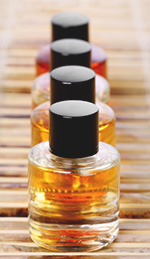 With so many different plant oil-based natural products to choose from in today’s digital marketplace, finding quality essential oils can be a daunting task. Knowing the different types of essential oil becomes even more important if you want to use plant-based oils in aromatherapy applications. Some essential oils that work great as fragrances or in cleansing products may not be suitable for aromatherapy work. A lot depends on how the essential oil is made, which is why we decided to compile this short, handy list of the types of essential oil by method of production.
With so many different plant oil-based natural products to choose from in today’s digital marketplace, finding quality essential oils can be a daunting task. Knowing the different types of essential oil becomes even more important if you want to use plant-based oils in aromatherapy applications. Some essential oils that work great as fragrances or in cleansing products may not be suitable for aromatherapy work. A lot depends on how the essential oil is made, which is why we decided to compile this short, handy list of the types of essential oil by method of production.
Steam-distilled oils: Steam distillation is unquestionably the most popular method worldwide for obtaining plant essential oils. It may also be one of the most ancient methods of essential oil production. In steam distillation, raw plant materials such as flowers, leaves, roots or seeds are placed in cooking chambers above a boiler. Steam from the boiler is allowed to flow over the plant material in the chamber to extract the plant’s volatile constituents. As the steam condenses into liquid, it yields the herbal material’s essential oil. Sometimes a hydrosol, or aromatic water, is also obtained in steam distillation. The essential oil and hydrosol are separated by further fractionation.
Steam distillation is the preferred method of extracting essential oils because it’s relatively cheap and easy, and yields a pure essential oil with no chemical residue. Furthermore, steam distillation is effective for almost all kinds of plant material except very delicate flowers such as jasmine, whose volatile oils are destroyed by being steamed at high temperatures.
Expressed Oils: It’s also possible to extract essential oils by physically pressing or squeezing plant material. This process is analogous to squeezing an orange or apple to extract the juice. Because no heat has been used in the extraction process, essential oils made by physical extraction are sometimes called cold-pressed oils. Cold pressing is a good method for extracting essential oils from robust yet pliable plant material, such as the rinds of citrus fruit; as you might expect, citrus oils such as lemon, sweet orange, and lime oil are sometimes made using cold expression.
Absolute/Concrete Oils: Some types of essential oil are produced by solvent extraction and may or may not be suitable for aromatherapy depending on the extraction method. Take absolute oils: these are created from the residue left over when plant material has been extracted using a chemical solvent such as ethanol or hexane. Some plants may yield both an essential oil and an absolute oil. Absolute oils are usually very thick and viscous, and darker in color than their essential oil counterparts.
Fragile flowers such as jasmine cannot be steam distilled and are only available as an absolute oil. Prior to the modern era, jasmine flowers had to be extracted by a process called cold enfleurage, which uses lard as the solvent. Thankfully, these days you can get therapeutic jasmine oil that has been made using cold CO2 extraction, a clean process that doesn’t leave any chemical residues in the finished oil.
Solvent-Extracted Oils: With that, we come to our last category, solvent-extracted essential oils. Hexane is often the solvent of choice in this method. Solvent extraction is a very efficient method of making essential oils, with only 0.5% of every batch lost as waste. However, solvent extraction is also an expensive method and usually limited to large-scale commercial operations. Finally, this method may leave chemical residues in the finished oil, so we don’t recommend using solvent-extracted essential oils in aromatherapy.
In general, steam-distilled essential oils and hydrosols are the gold standard for aromatherapy applications. More recently, essential oils made using cold CO2 extraction are also catching on in aromatherapy. Whether you want to use essential oils as a perfume, cleanser, or in aromatherapy, we hope this guide to the different types of essential oil has helped you discover the essential oil that will work best for you!
